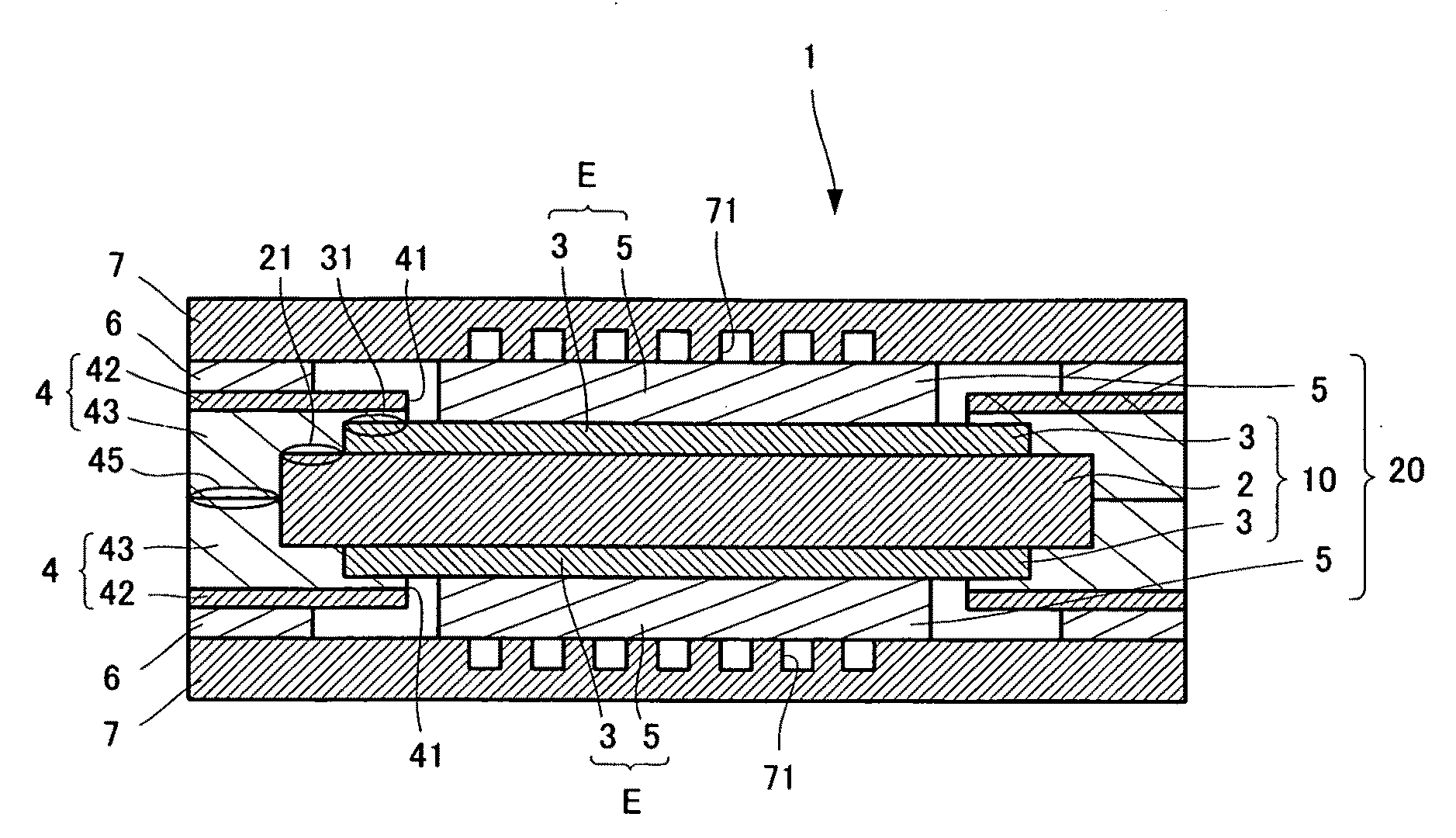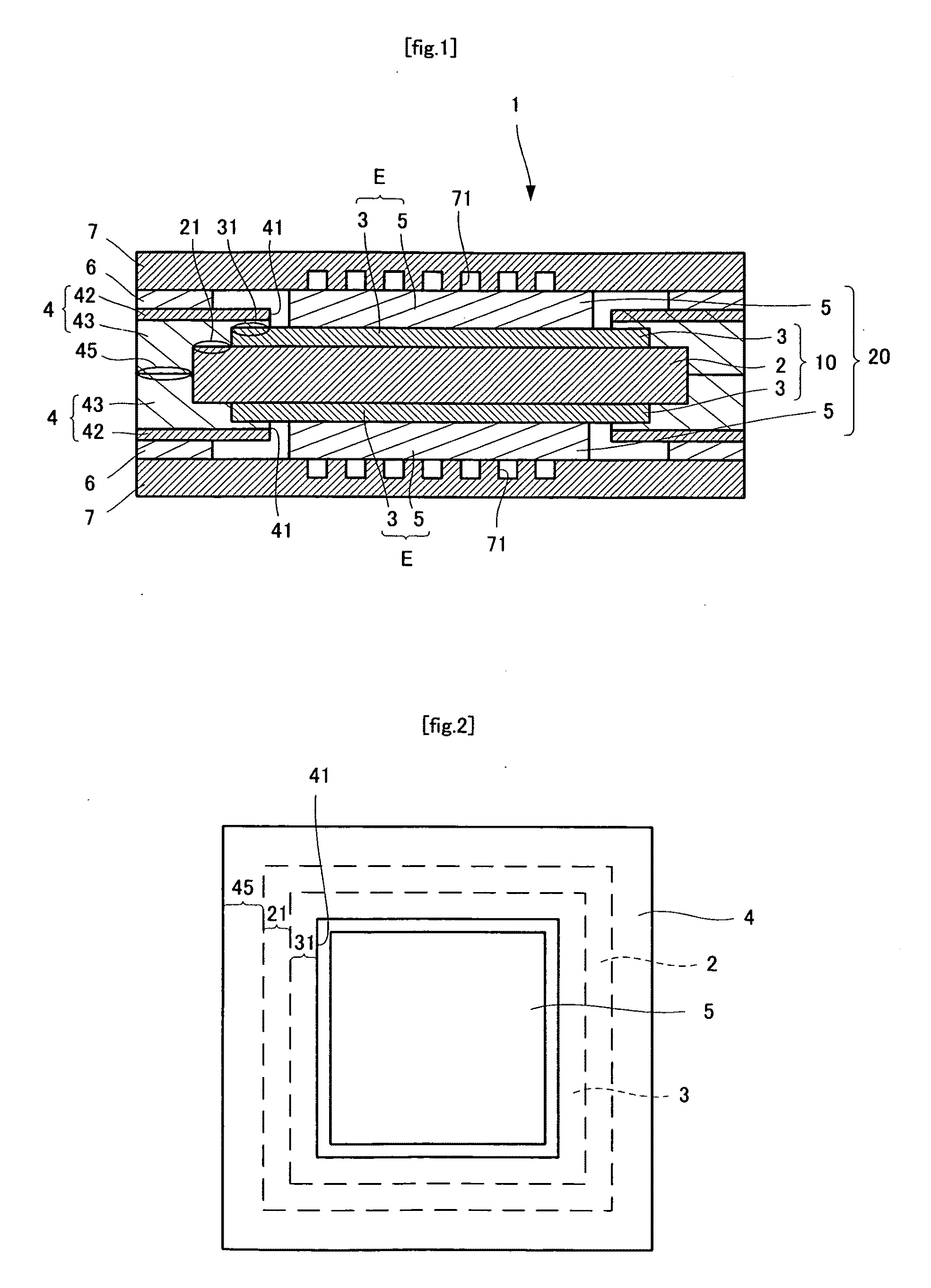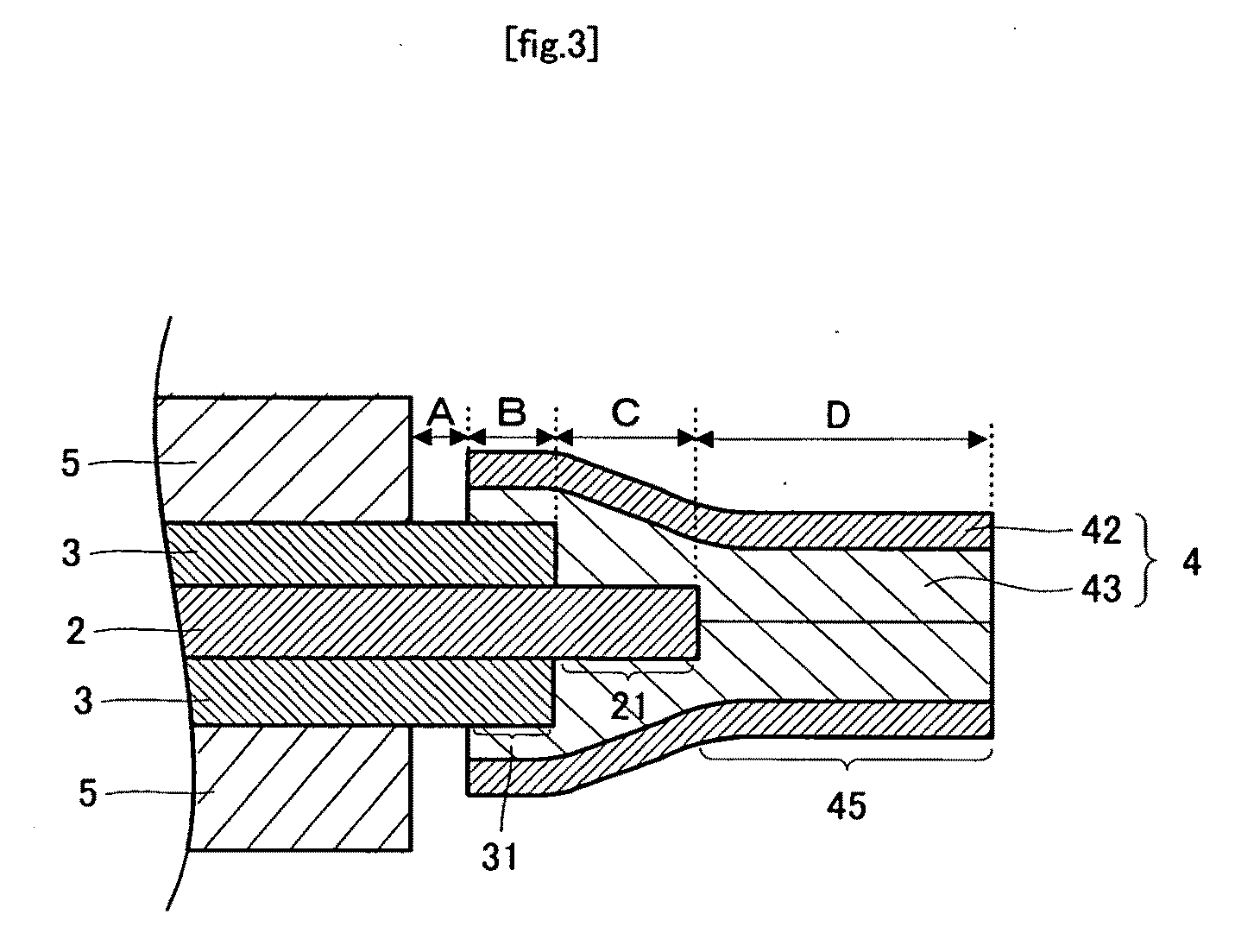Membrane catalyst layer assembly with reinforcing films, membrane electrode assembly with reinforcing files, and polymer electrolyte fuel cells
a membrane electrode and reinforcing film technology, applied in the direction of fuel cell details, electrochemical generators, cell components, etc., can solve the problems of repeated expansion and shrinkage preventing effective use and ultimately breaking the electrolyte membrane, so as to prevent the mechanical strength of the electrolyte membrane or catalyst layer from decreasing, reduce heat, and reduce the pressure applied to the reinforcing film during bonding
- Summary
- Abstract
- Description
- Claims
- Application Information
AI Technical Summary
Benefits of technology
Problems solved by technology
Method used
Image
Examples
first embodiment
[0058]A first embodiment is described below with reference to the drawings.
[0059]As shown in FIGS. 1 and 2, a polymer electrolyte fuel cell 1 includes an electrolyte membrane 2 that is rectangular from a plan view. The electrolyte membrane 2 preferably has a thickness of from about 20 to about 250 μm, and more preferably from about 20 to about 80 μm. Catalyst layers 3, which are rectangular from a plan view, and smaller in size than the electrolyte membrane 2, are formed on upper and lower surfaces of the electrolyte membrane 2. The catalyst layers 3 preferably have a thickness of from about 10 to about 100 μm. and more preferably from about 20 to about 50 μm. The assembly wherein the catalyst layers 3 are formed on both surfaces of the electrolyte membrane 2 is referred to as a membrane-catalyst layer assembly 10. Because the catalyst layers 3 are smaller than the electrolyte membrane 2, they are not formed on outer edge portions 21 of the electrolyte membrane 2. Distance C from th...
second embodiment
[0083]A second embodiment is described below with reference to the drawings, with emphasis on features of the second embodiment different from those of the first embodiment.
[0084]As shown in FIGS. 6 and 7, the polymer electrolyte fuel cell 1′ includes a membrane-catalyst layer assembly 10, which is identical to that of the first embodiment. On each of catalyst layers 3 of the membrane-catalyst layer assembly 10 lies a gas diffusion layer 5 that is rectangular from a plan view. Each catalyst layer 3 and each gas diffusion layer 5 constitute an electrode E. The gas diffusion layer 5 is substantially identical in size to the catalyst layer 3, or is smaller than the catalyst layer 3. Distance F from the outer edge of the gas diffusion layer 5 to the outer edge of the catalyst layer 3 (see FIG. 8) is preferably from about 0 to about 5 mm. The assembly wherein the gas diffusion layers 5 are formed on both catalyst layers 3 of the membrane-catalyst layer assembly 10 is referred to as a mem...
example 1
[0101]A polymer electrolyte fuel cell as shown in FIG. 1 was prepared as follows.
[0102]A 53 μm thick NRE212CS (manufactured by Dupont) cut to a size of 63×63 mm was used as an electrolyte membrane 2.
[0103]Transfer sheets 8 for forming catalyst layers were then prepared as follows. First, 10 g of 1-butanol, 10 g of 3-butanol, 20 g of a fluororesin (a 5 wt % Nafion binder, manufactured by Dupont), and 6 g of water were added to 2 g of carbon with a platinum catalyst supported thereon (platinum content: 45.7 wt %; Tanaka Kikinzoku Group, TEC10E50E). These components were mixed using a dispersion machine to prepare an ink composition for forming catalyst layers. The ink composition for forming catalyst layers was then applied to polyester films (manufactured by Toray, X44, film thickness: 25 μm) so that the catalyst layers after drying had a platinum weight of 0.4 mg / cm2, thereby preparing transfer sheets 8 for forming catalyst layers.
[0104]The thus prepared transfer sheets 8 for formin...
PUM
 Login to View More
Login to View More Abstract
Description
Claims
Application Information
 Login to View More
Login to View More - R&D
- Intellectual Property
- Life Sciences
- Materials
- Tech Scout
- Unparalleled Data Quality
- Higher Quality Content
- 60% Fewer Hallucinations
Browse by: Latest US Patents, China's latest patents, Technical Efficacy Thesaurus, Application Domain, Technology Topic, Popular Technical Reports.
© 2025 PatSnap. All rights reserved.Legal|Privacy policy|Modern Slavery Act Transparency Statement|Sitemap|About US| Contact US: help@patsnap.com



